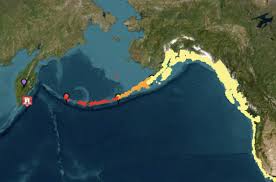Understanding Recent Tsunami Warnings and Their Impact

Introduction
Tsunami warnings are critical notifications issued by authorities in response to seismic events that pose a risk of significant tidal waves. With increasing occurrences of earthquakes, understanding tsunami risks has become essential for coastal communities across Canada. The latest developments in tsunami preparedness and warning systems highlight the importance of being informed, especially given the potential devastation a tsunami can cause.
Recent Events
On October 20, 2023, a significant undersea earthquake measuring 7.6 on the Richter scale struck near Haida Gwaii, British Columbia. Following the quake, the Pacific Tsunami Warning Center issued a tsunami warning for the coastal regions of British Columbia. Residents of coastal communities were advised to evacuate to higher ground immediately, reflecting the serious nature of the situation.
Fortunately, the warning was lifted two hours later when it was confirmed that no substantial tsunami waves would occur. However, this incident reignited discussions about the preparedness of coastal regions in dealing with potential tsunami threats. Evacuation drills and public education initiatives have been ongoing in these areas, but many experts argue that more needs to be done.
Impact on Coastal Communities
Tsunami warnings have significant implications for local communities, particularly those along the Pacific coast. In recent years, Canada has seen an increase in earthquake activity, prompting government agencies to enhance tsunami detection systems and public warning protocols. The events in Haida Gwaii showcased both the effectiveness of these systems and the need for ongoing improvement in communication strategies.
The National Tsunami Warning Centre (NTWC) emphasizes the importance of a quick and effective evacuation plan for coastal residents. Educational programs have been deployed to clarify evacuation routes and procedures, raising community awareness about the signs of an impending tsunami and the immediate actions that must be taken.
Conclusion
While the October earthquake turned out to be a false alarm for a significant tsunami event, it serves as a crucial reminder of the vulnerabilities faced by coastal regions in the wake of seismic activity. Disaster preparedness, timely communication, and community engagement are vital in minimizing risks. As climate change increases the frequency of natural disasters, the efforts to improve tsunami warning systems and public awareness will be paramount in protecting lives along Canada’s coast. The necessity for increased funding for infrastructure and education on tsunami preparedness cannot be overstated, as these measures can prove life-saving when disaster strikes.









